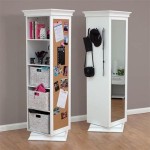Bathroom Mirror Wood: A Guide to Selection and Care
Bathroom mirrors framed with wood add warmth and a touch of nature to what can often be a sterile space. The natural beauty of wood complements a range of bathroom styles, from rustic farmhouse to sleek modern. However, the humid environment of a bathroom presents unique challenges for wood, requiring careful selection and maintenance to ensure longevity.
Choosing the Right Wood
Not all wood species are suitable for bathroom environments. Woods with high natural oil content and dense, closed grains are best suited to withstand humidity and resist rot and mildew. Popular choices include teak, cedar, mahogany, and bamboo. These woods naturally resist moisture and are less susceptible to warping or swelling.
Engineered wood products, such as plywood and MDF (medium-density fiberboard), can be used for bathroom mirror frames, but require meticulous sealing and finishing to prevent moisture damage. While often a more budget-friendly option, they generally lack the durability and longevity of solid wood.
Finishes for Protection
Regardless of the wood species chosen, a protective finish is essential for bathroom mirror frames. A high-quality sealant will create a barrier against moisture, preventing it from penetrating the wood. Several options are available, including varnish, lacquer, and polyurethane.
Varnish provides a durable, water-resistant finish that enhances the natural beauty of the wood. Lacquer offers a hard, glossy finish that is resistant to chipping and scratches. Polyurethane is another popular choice, known for its excellent water resistance and durability. Multiple coats of any chosen finish are recommended for optimal protection in a bathroom setting.
Considering the Bathroom Environment
The specific conditions of the bathroom will influence the choice of wood and finish. Bathrooms with good ventilation will experience less humidity, allowing for a wider range of wood species and potentially less intensive finishing requirements. Bathrooms with limited ventilation, such as those without windows, will require more careful selection of moisture-resistant wood and a robust, multi-layered finish.
The proximity of the mirror to the shower or bathtub is another crucial factor. Mirrors located directly above a sink or near a shower are exposed to higher levels of humidity and splashing. In these situations, opting for the most moisture-resistant wood species and a high-performance sealant is paramount.
Installation and Mounting
Proper installation is key to preventing moisture damage to a wooden bathroom mirror frame. Ensure the wall is properly prepared and dry before mounting the mirror. Using appropriate mounting hardware and sealant around the edges will further protect the frame from moisture infiltration.
Consider using spacers or standoffs when mounting the mirror to allow for air circulation behind the frame. This can help prevent moisture buildup and reduce the risk of mold growth. Avoid directly mounting the frame flush against the wall, especially in areas prone to splashing.
Maintenance and Care
Regular cleaning and maintenance are essential for preserving the beauty and longevity of a bathroom mirror with a wooden frame. Wipe down the frame regularly with a soft, damp cloth to remove any moisture or condensation. Avoid using harsh cleaning chemicals, which can damage the finish.
Periodically inspect the frame for any signs of damage, such as cracks, chips, or peeling finish. Address any issues promptly to prevent moisture from penetrating the wood. Reapplying a sealant every few years can provide additional protection and maintain the frame's resistance to moisture.
Style and Design
Wooden bathroom mirror frames offer a wide range of design possibilities, complementing various bathroom styles. From rustic reclaimed wood for a farmhouse aesthetic to sleek, dark-stained wood for a modern look, the choice of wood and finish can significantly impact the overall bathroom design.
Consider the existing décor and fixtures when selecting a wood frame. The frame should complement the overall style of the bathroom and create a cohesive look. Factors such as the color of the vanity, the style of the lighting fixtures, and the overall color palette of the bathroom should be considered.
The size and shape of the mirror and its frame also play a significant role in the overall design. A large, ornate frame can serve as a focal point in a spacious bathroom, while a smaller, simpler frame might be more suitable for a smaller space.

Round Wood Mirror Diy Angela Marie Made

Carring Mid Century Solid Wood Wall Mirror Urban Mood

Bayonne Bathroom Mirror 4 Colours Gold Black Wood Oak 3 Sizes 50cm 60cm 70cm Classy Elegant Singapore Accessories
Diy Wood Frame Mirror Farmhouse Industrial Bathroom Joyfully Treasured

Bathroom Mirror Cabinet Oak Small Mirrors Cabinets

Diy Wood Framed Bathroom Mirror Christina Maria Blog

Instock Rena Mirror Bathroom Solid Wood Round Vanity Toilet With Shelf Wall Hanging Furniture Home Living Decor Mirrors On Carou

Design Sleuth 5 Bathroom Mirrors With Shelves Remodelista Wood Framed Mirror Shelf Rustic

20 Stylish Bathroom Mirror Ideas

Malvi Modern Bathroom Mirror Space Living








